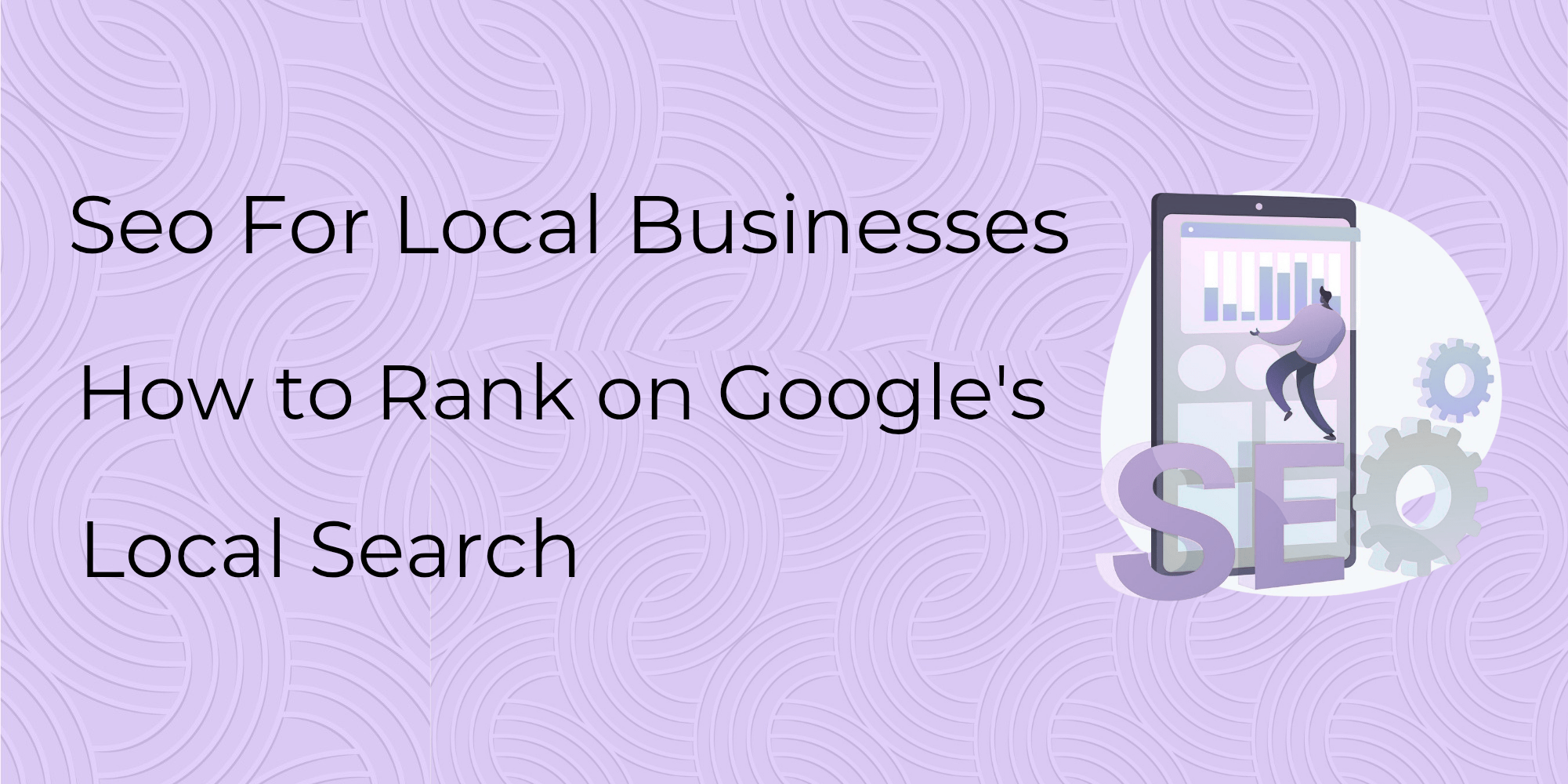Local search visibility is key for small and medium-sized businesses in today’s digital-first world. If you have a restaurant, dental practice, repair business, or boutique, your customers are looking for your services online — and usually locally.
As Google explains, 46% of all searches are local intent, i.e., users seek nearby businesses or services. If your company doesn’t show up in the results, you’re probably missing potential customers to your competitors who do.
In this blog post, we’ll delve into how Local SEO functions and give you actionable tips to get your business ranking on Google’s local search results, including the prized Google 3-Pack.
● What Is Local SEO?
Local Search Engine
Optimization (SEO) is the optimization of your online presence to drive more business from local, relevant searches. Those searches occur on Google and other search engines.
When a user searches for “coffee shop near me” or “plumber in [city name],” Google lists them businesses from their location. These usually appear on the top of the page as a map view—this is referred to as the Google Local Pack or Map Pack.
Local SEO gets your business featured in:
- Google Maps listings
- Google Local Pack (Top 3)
- Organic search results with local ranking
● Why Local SEO is Important
Here’s why Local SEO is an investment worth making:
- 88% of customers who search locally on their smartphone go to or call a company within 24 hours.
- Searches that include words such as “near me” or “close by” have increased more than 500% over the last few years.
- Google’s algorithm more and more emphasizes local intent and relevance over wide rankings.
For limited marketing budgets of small businesses, local SEO represents one of the highest returns on investment.
● How Google Ranks Local Businesses
Google relies on three primary factors to rank local businesses:
- Relevance – The extent to which a local listing satisfies the query of the searcher.
- Distance – The proximity of your business to the searcher or specified location.
- Prominence – How well established and reputable your company is, as reflected in reviews, links, citations, and general web visibility.
● Step-by-Step Guide to Ranking in Local Search
Let’s discuss the ways to rank higher on Google local search results with these effective, tried-and-tested strategies:
- Claim and Optimize Your Google Business Profile (GBP)
Your Google Business Profile (previously Google My Business) is the greatest possible single SEO influencer for local SEO.
How to optimize it:
- Verify and claim your listing at https://business.google.com.
- Make sure your NAP (Name, Address, Phone Number) is consistent and accurate.
- Select the most appropriate business category.
- Include a full description with corresponding keywords.
- Attach high-quality images of your business, products, and services.
- Include your operating hours, services, and website URL.
- Turn on and respond to customer reviews (more about that below).
A properly optimized GBP is necessary for appearing in the Google Map Pack and local search results.
- Optimize Your Site for Local Search
Your site still has a role to play in your local SEO process. Google references your site to verify the information in your GBP.
Important on-page optimizations:
- Use your city or service area in your page titles, meta descriptions, and headings.
- Build a standalone “Contact” or “Location” page with your NAP, embedded Google Map, and directions.
- Include local schema markup (Structured Data) to assist Google in understanding your business information.
- Ensure your site is mobile-friendly and has high page speed.
- Include FAQs, reviews, and service descriptions with local intent.
- Develop Location-Specific Content
Search engines and consumers adore local content. It indicates relevance and authority.
Content ideas
- Posts on blog about local news, events, or community guides.
- Top 5 or Best of lists highlighting local businesses (even your competitors).
- Landing pages specific to each city or neighborhood you operate in.
- Highlighting customer stories or case studies with local flavor.
The more content you have related to your local area, the more signals you send Google that you’re a local authority.
- Get Listed on Online Directories (Local Citations)
A local citation is any online mention of your business, including NAP details.
Get your business listed in credible directories such as:
- Yelp
- Bing Places
- Apple Maps
- Yellow Pages
- Local Chamber of Commerce websites
Make them all consistent — small variations can damage your rankings.
- Get and Manage Online Reviews
Reviews are a significant local SEO ranking factor and affect customer trust.
Best practice:
- Encourage satisfied customers to leave reviews on Google.
- Answer professionally and in a timely fashion to all reviews — positive and negative.
- Don’t use fake reviews or offer incentives for them (goes against Google’s guidelines).
- Leverage your reviews in marketing and on your site.
Additional positive, new, and more relevant reviews can really boost your visibility in local search results.
- Develop Local Backlinks
Local backlinks from other businesses, blogs, or organizations contribute to your domain authority and local significance.
Tips to get local backlinks:
- Collaborate with local businesses for promotions or sponsorship.
- Get listed on local newspapers or magazines.
- Host or sponsor a local event and get listed on events websites.
- Write guest posts on local blogs or community forums.
Every backlink is a vote to Google that your business is valuable and worthy
- Leverage Social Media to Grow Local Presence
While social cues don’t ever affect rankings, they make brands more visible and can generate local traffic.
Tips:
- Post local events, deals, and customer testimonials.
- Tag locations in posts and stories.
- Incentivize check-in and user-generated content.
- Connect profiles to your site and GBP.
A strong social presence will support your local brand identity and create engagement.
- Monitor Your Local SEO Performance
To track results and refine strategies, utilize tools such as
- Google Business Profile Insights – Understand how people discover and engage with your listing.
- Google Search Console – Track keyword rankings and site performance.
- Google Analytics – Understand traffic sources, conversions, and user behavior.
- Local SEO tools such as BrightLocal, Moz Local, or Whitespark.
Watch metrics such as: - Calls and direction requests from Google
- Local keyword rankings
- Customer reviews and engagement
- Website traffic by location
● Common Local SEO Mistakes to Avoid
- Inconsistent NAP data throughout directories
- Suppressing or removing poor reviews
- Selecting improper GBP categories
- Keyword filling your content
- Failing to optimize for mobile customers
- Neglecting customer interaction on Google and social media
Final Thoughts:
Local SEO Is an Ongoing Process
Ranking on Google’s local search is not a one-time endeavor. It takes constant optimization, customer interaction, and adjusting to changing algorithms.
The good news? With the right strategy and consistent effort, local SEO can become your most cost-effective customer acquisition channel.
Whether you’re just starting out or looking to improve your current rankings, focus on the fundamentals: Google Business Profile, local content, citations, reviews, and backlinks.


